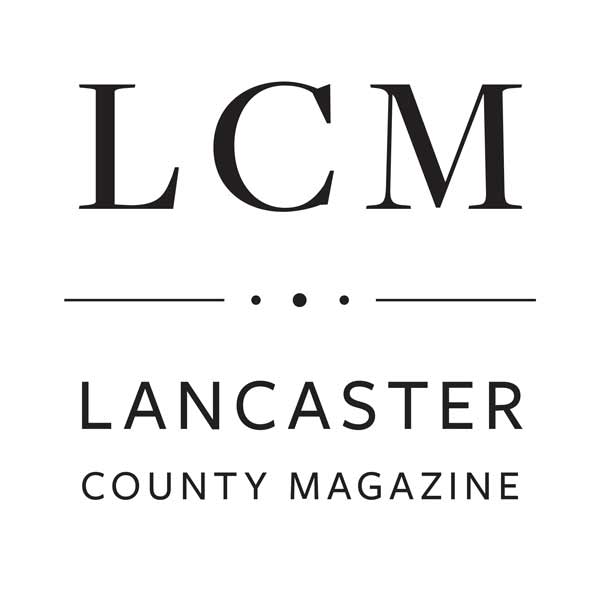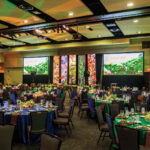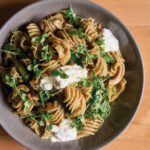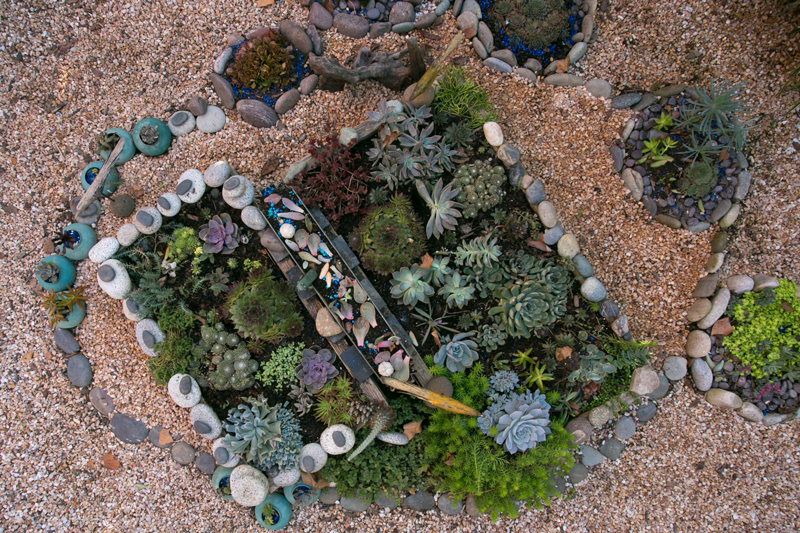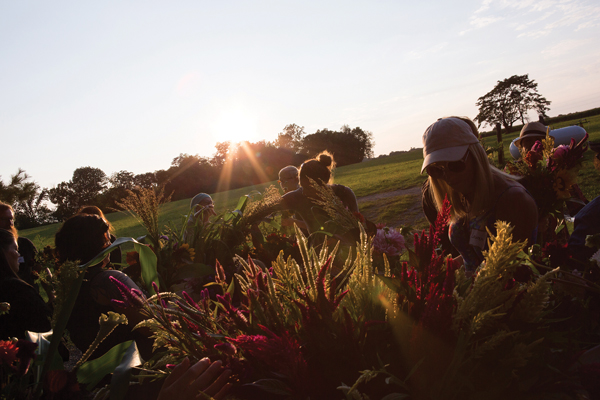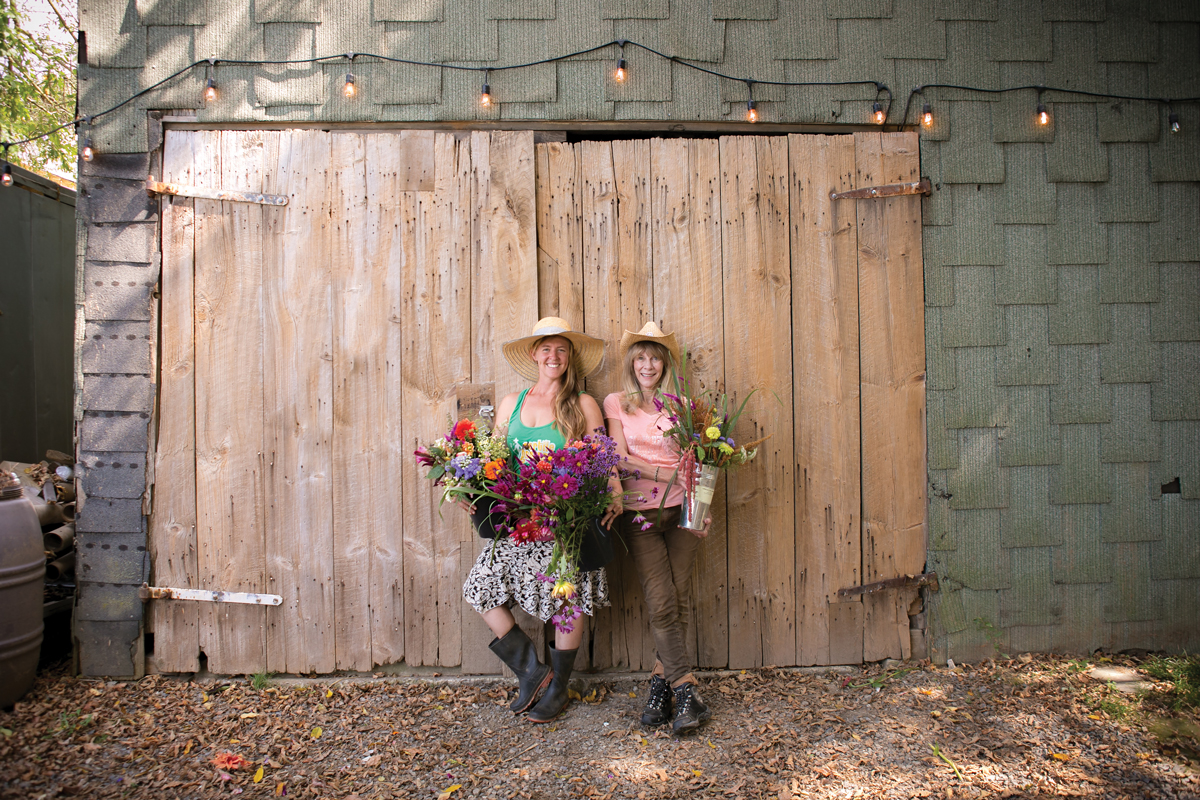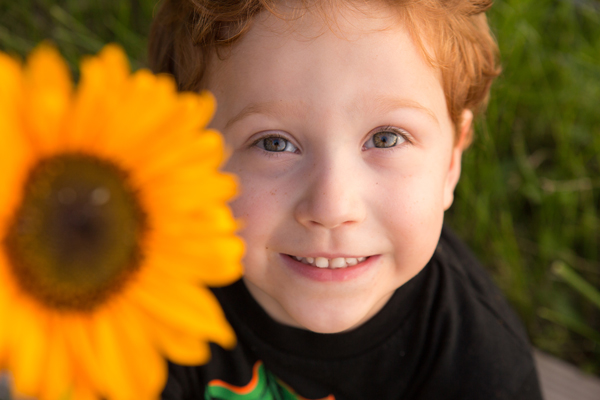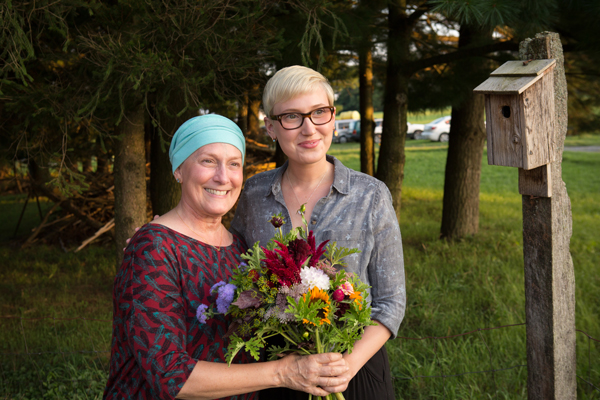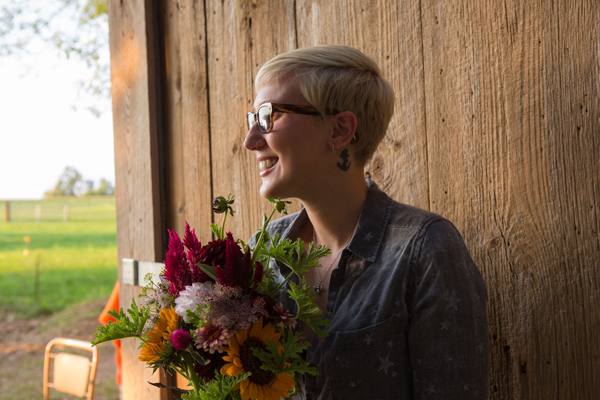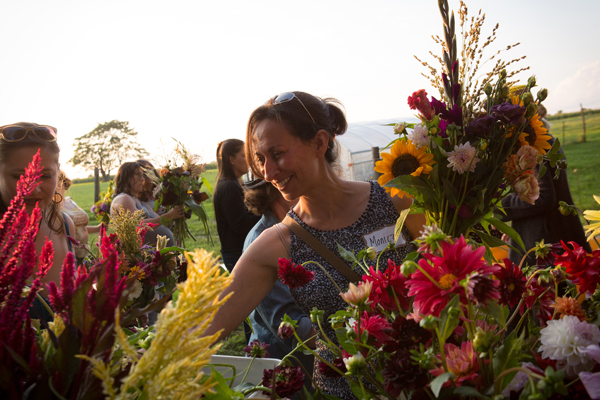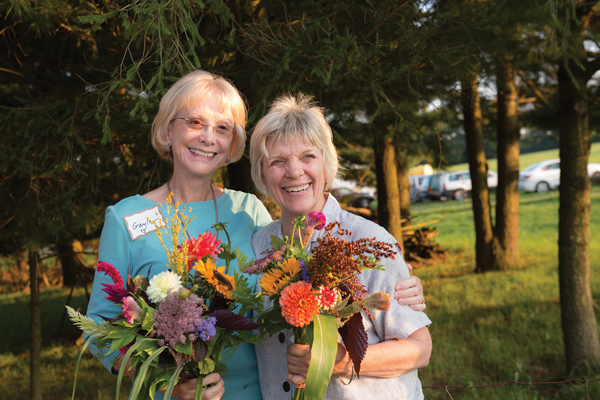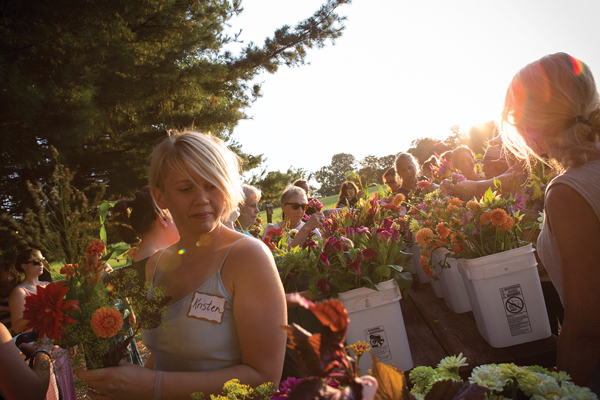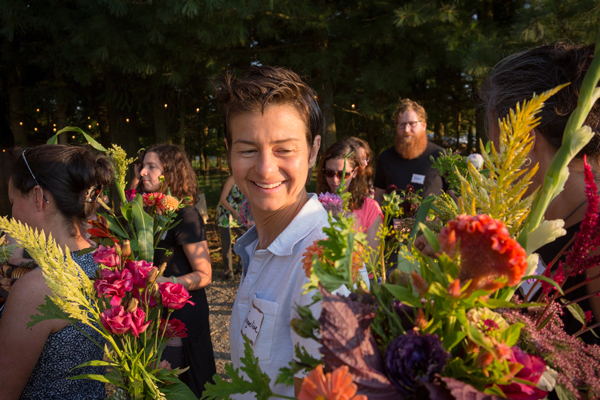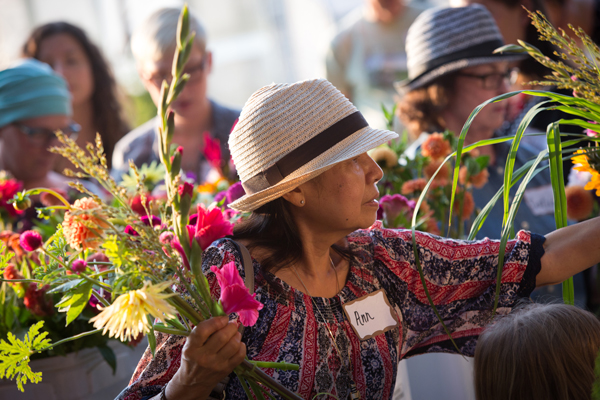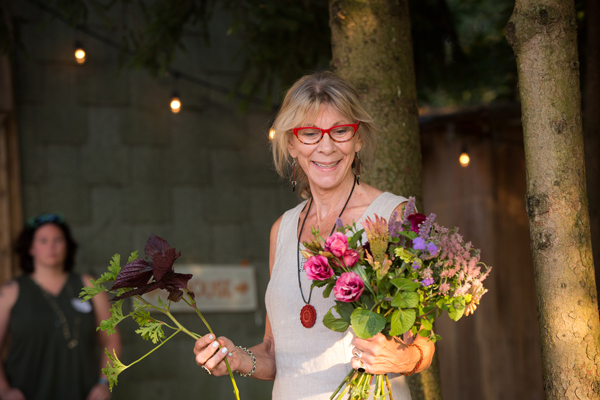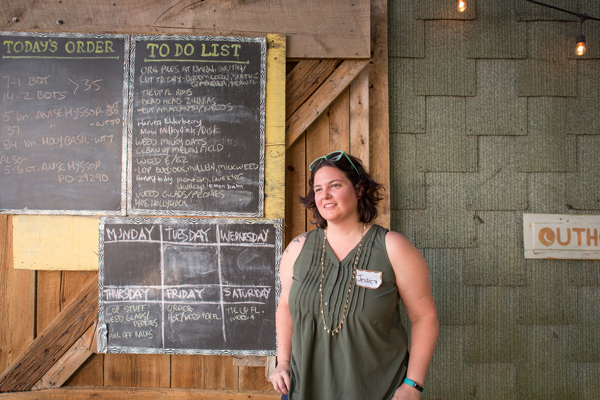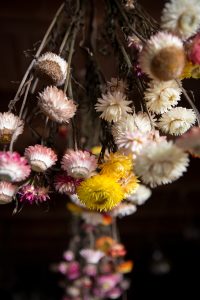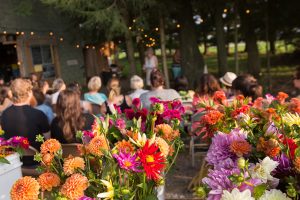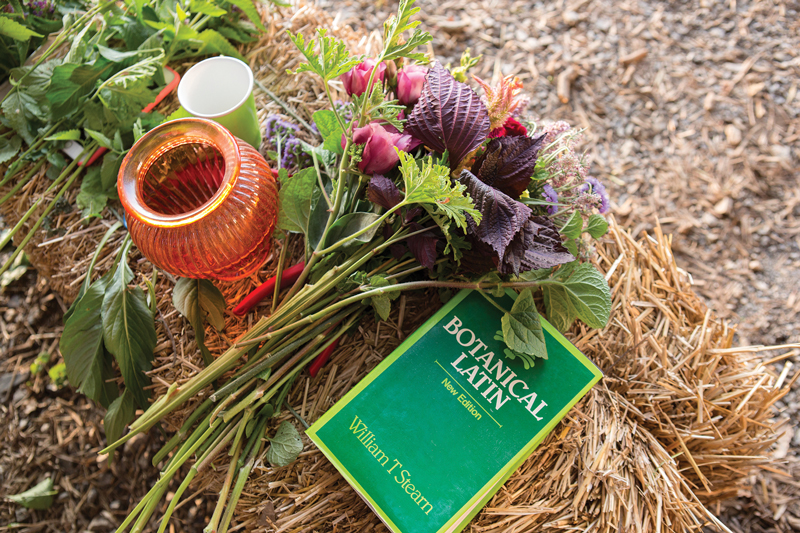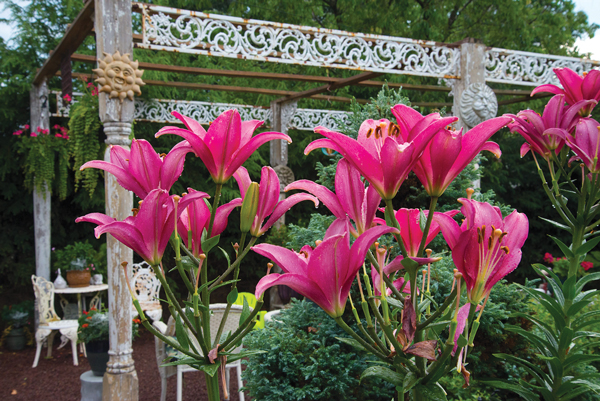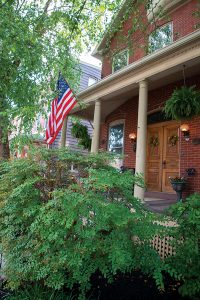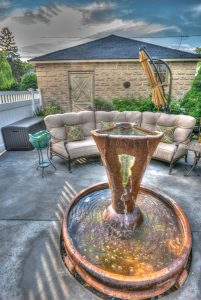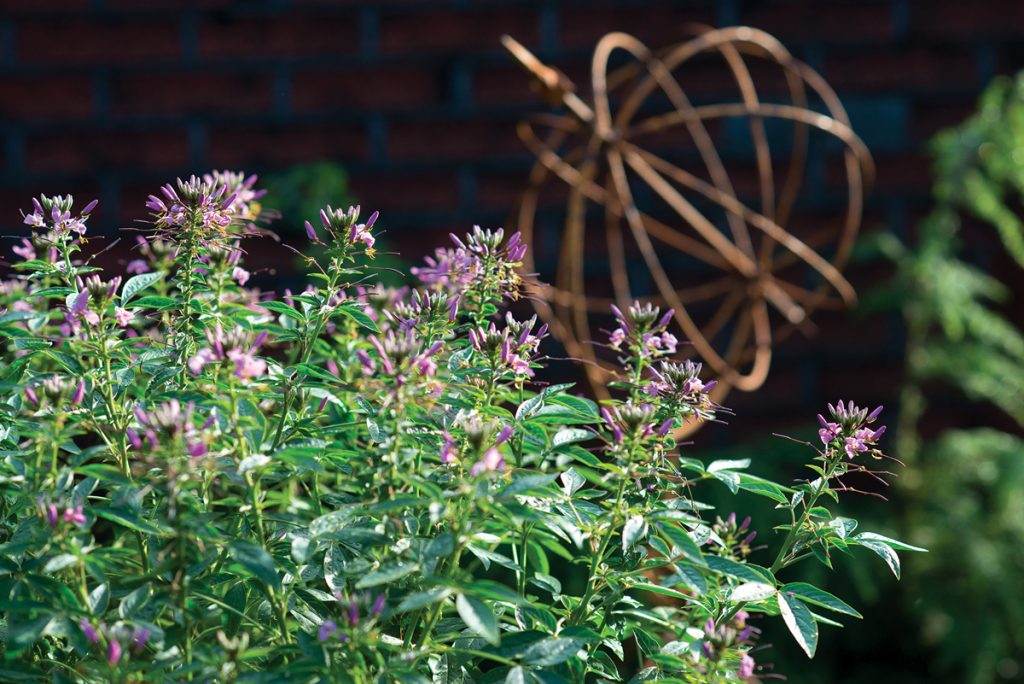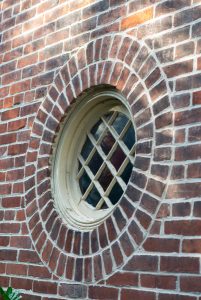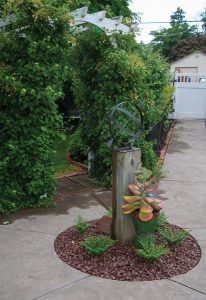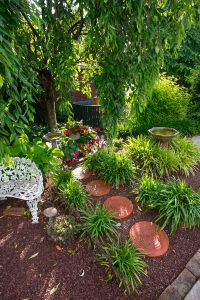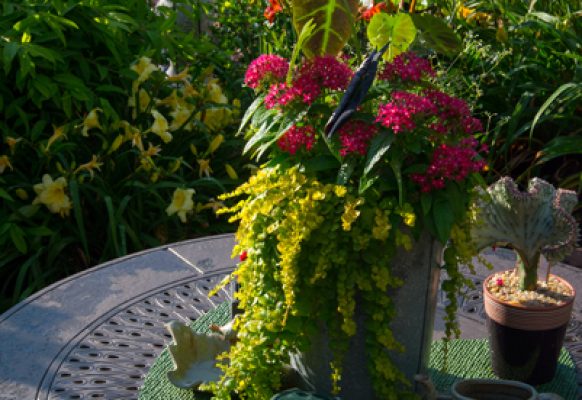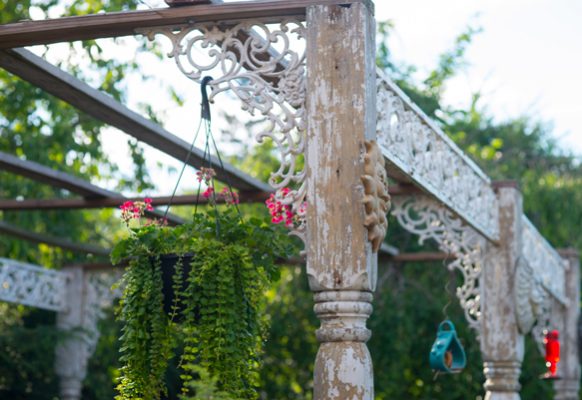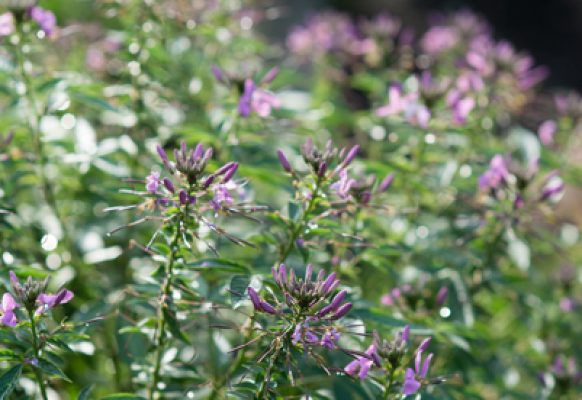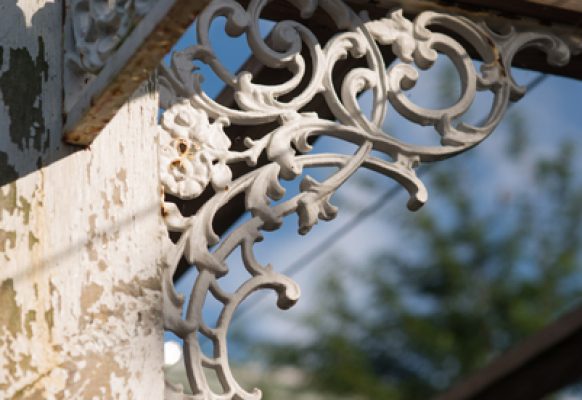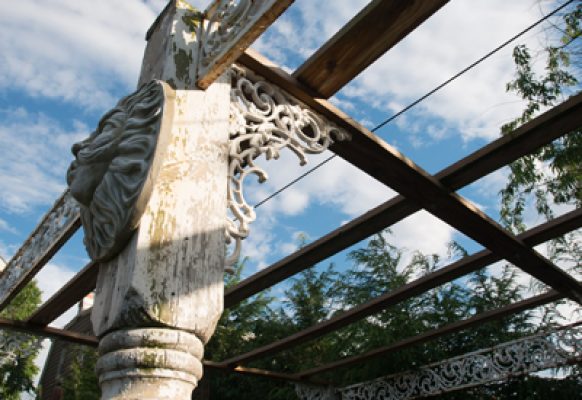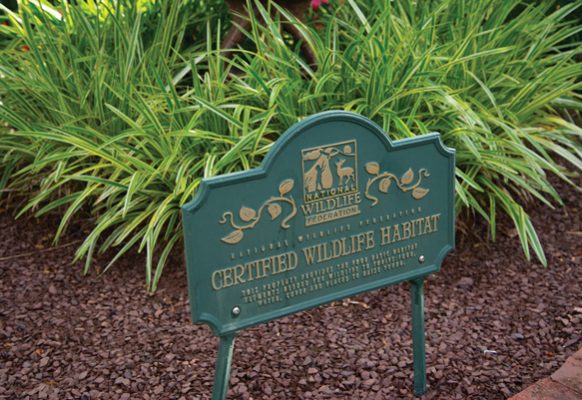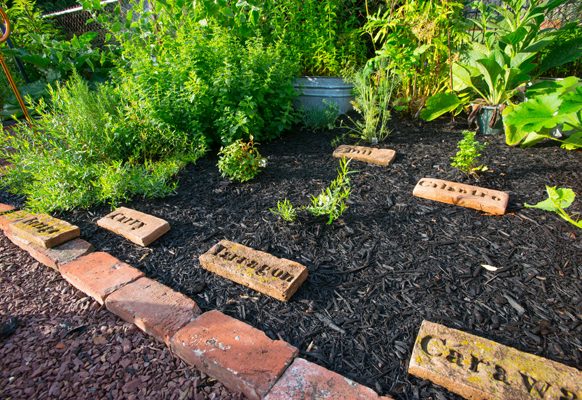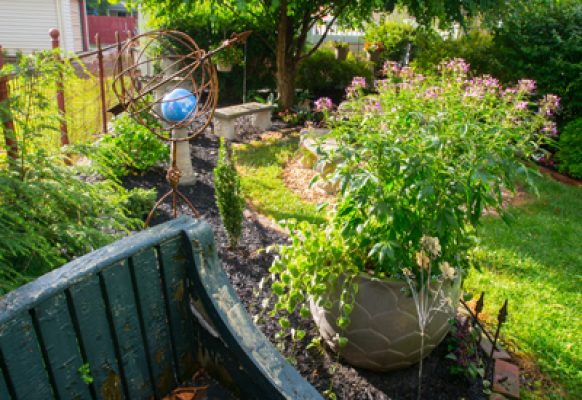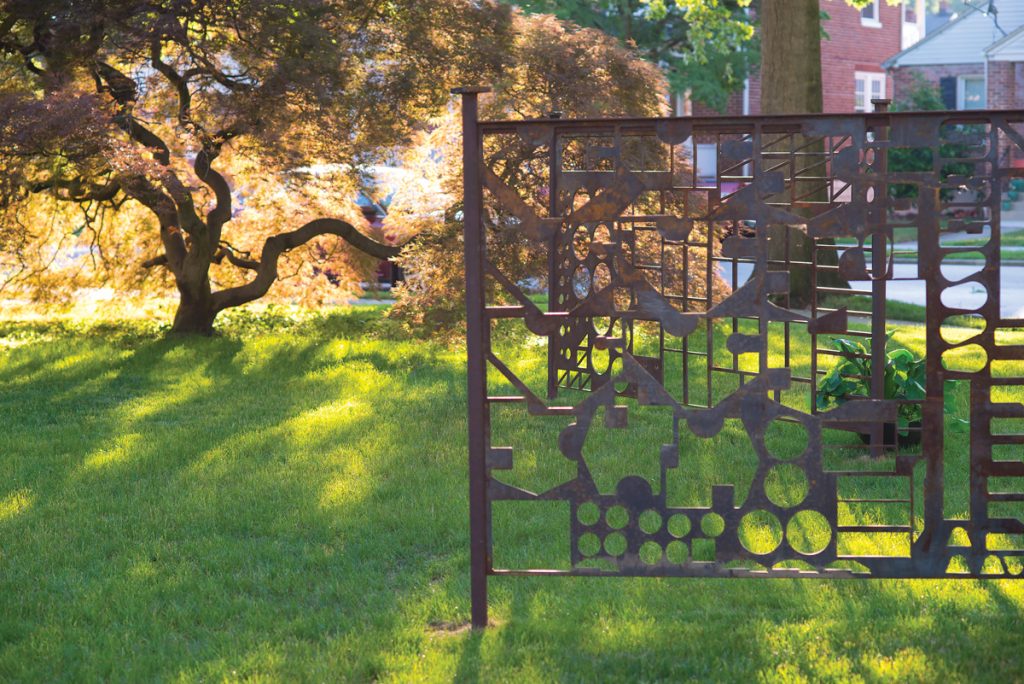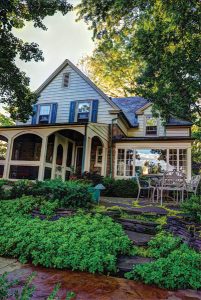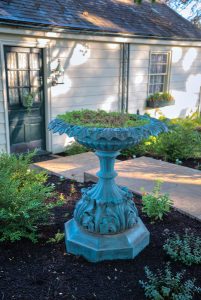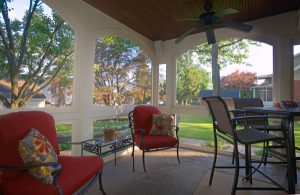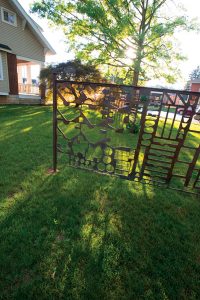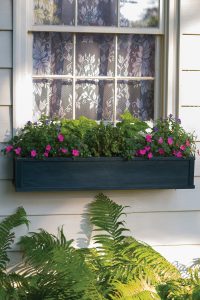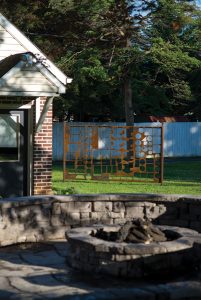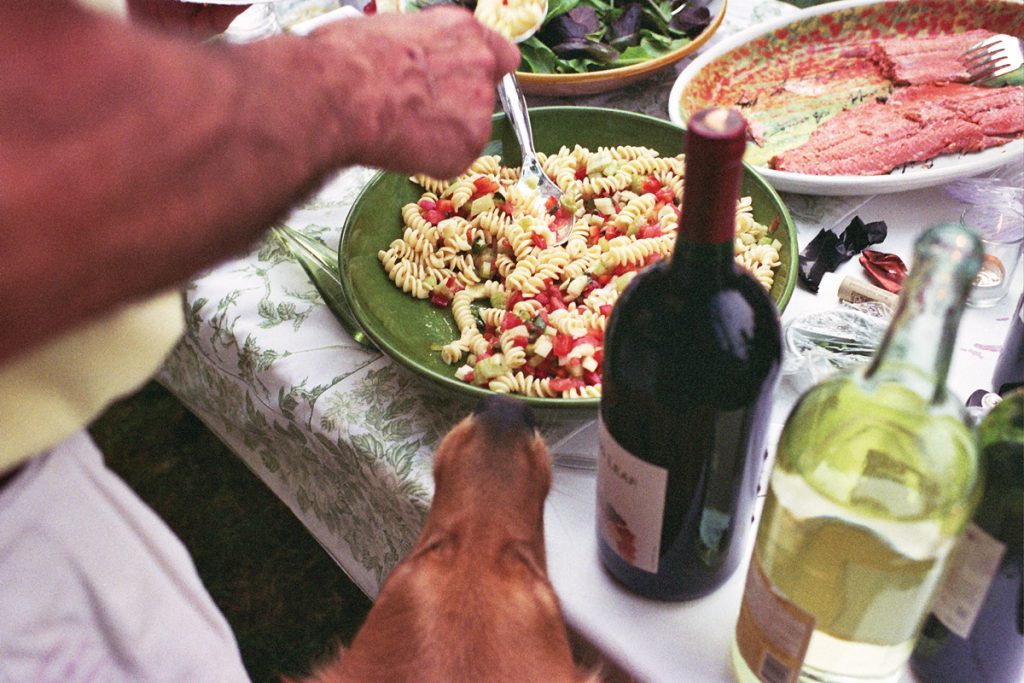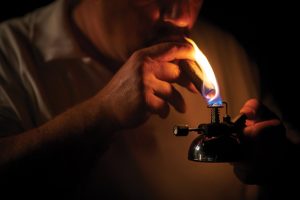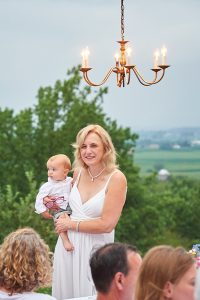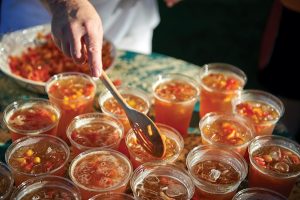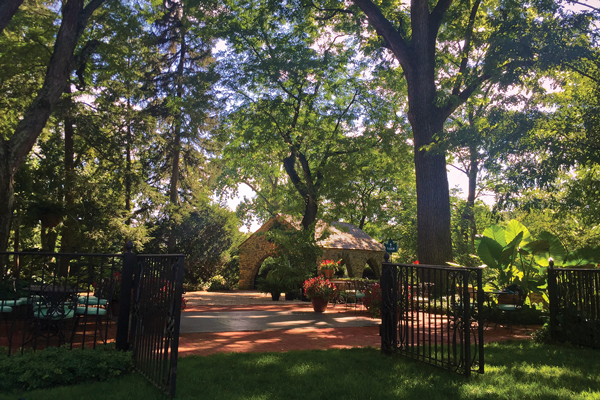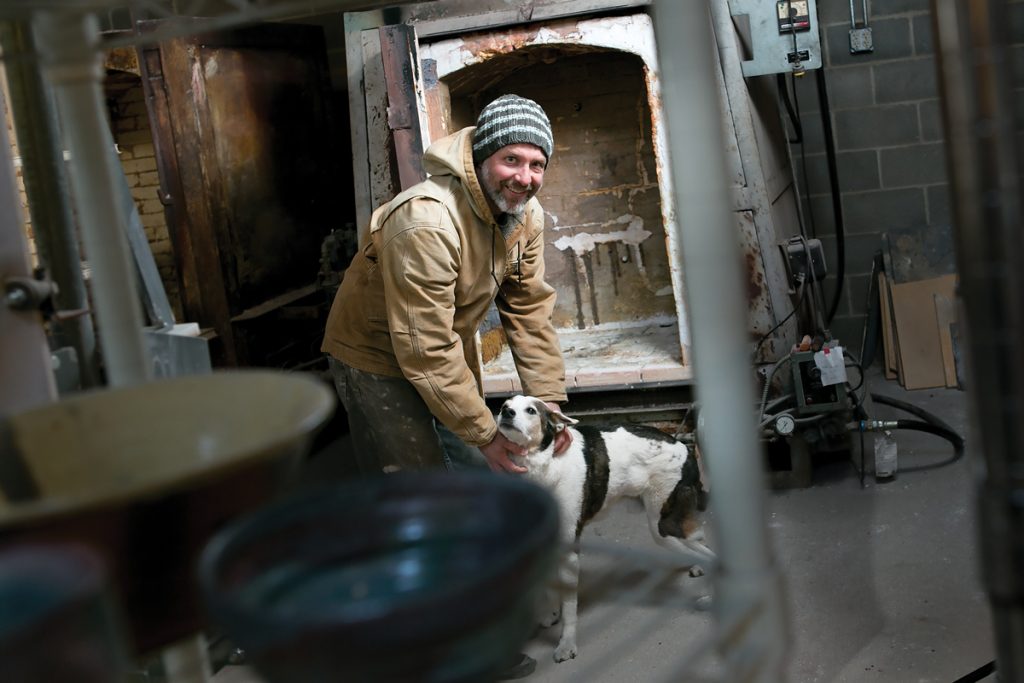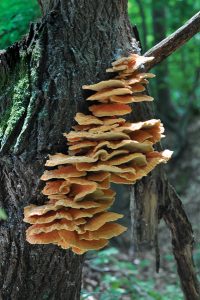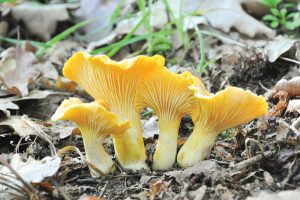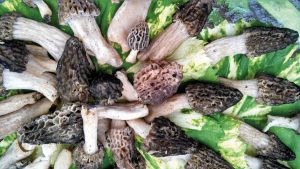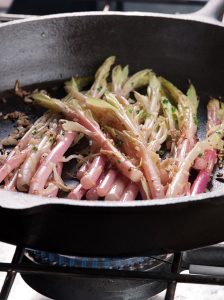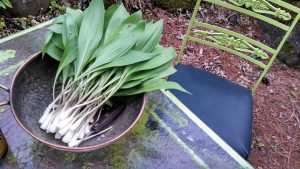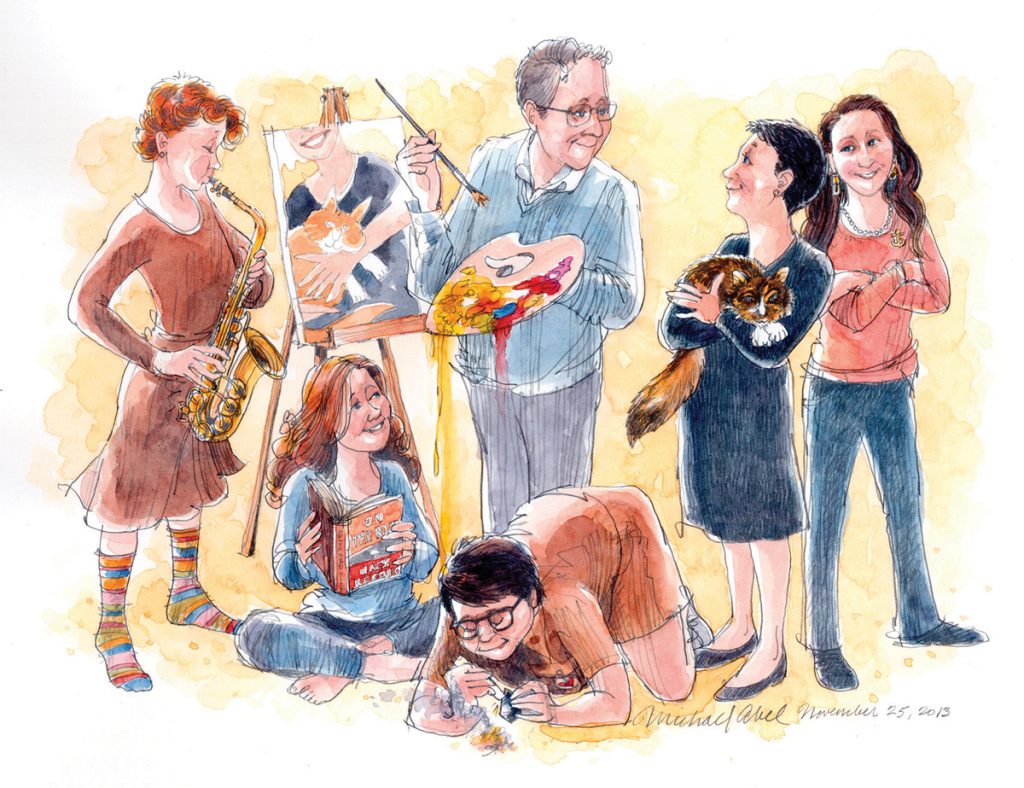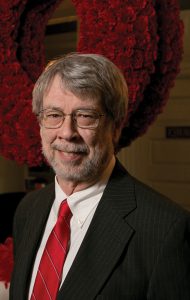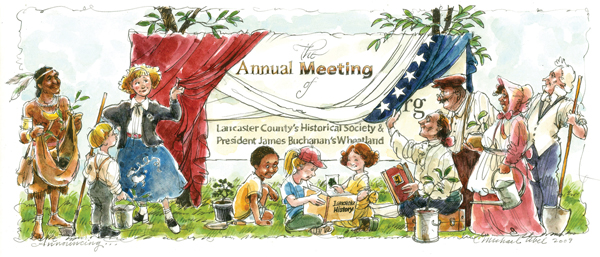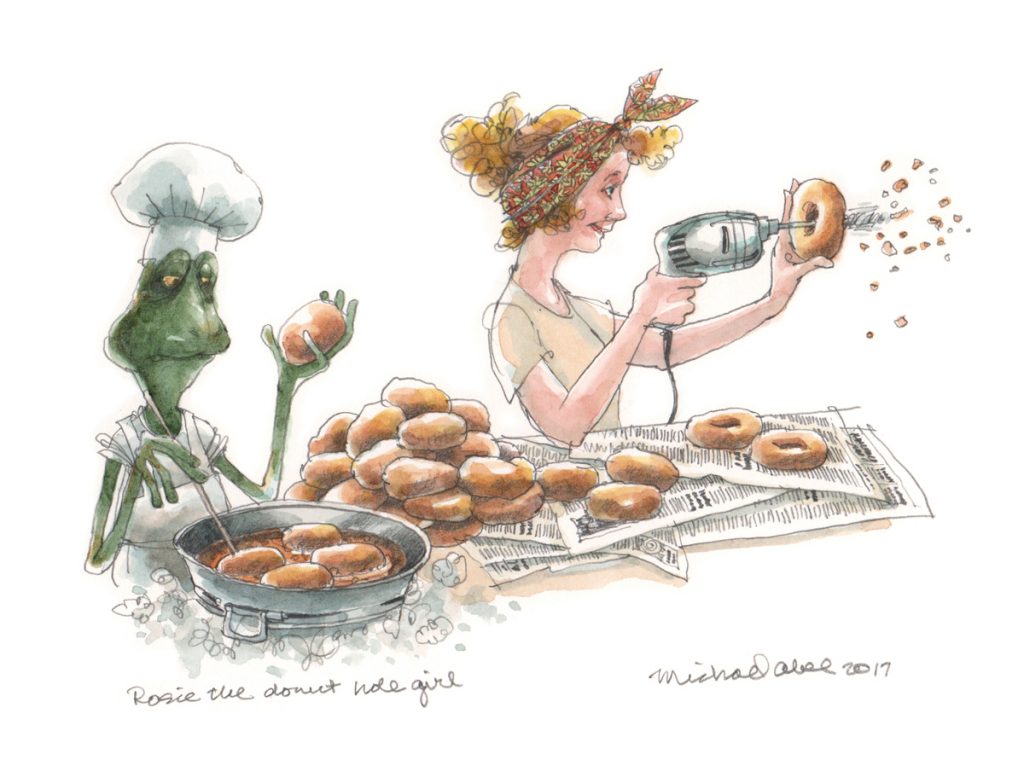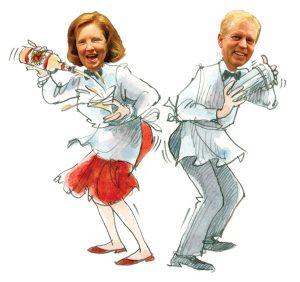Three years ago, Victoria bought a house in the city and immediately went to work restoring its “postage-stamp-sized” backyard.
“It was a mess,” Victoria says of the backyard that was distinguished by an overgrown crabapple tree and bare ground that was dotted with patches of grass. She had the tree removed and paved over the ground, using 40 bags of gravel. “It acts as mulch,” she points out. “And, I like the way it sounds when you walk on it.”

 The center of the garden is dedicated to a raised bed in which succulents grow. Pots containing more succulents surround it. She discovered the allure of succulents while traveling through the Southwest. “Succulents are really popular out West because they are drought-resistant,” she reports. “I like them because they look like little sculptures, and they lend themselves to a variety of uses.” Victoria uses the succulents she grows for her floral-design projects and to create living heirloom jewelry. When the weather turns cold, she moves them to a sunny room on the second floor.
The center of the garden is dedicated to a raised bed in which succulents grow. Pots containing more succulents surround it. She discovered the allure of succulents while traveling through the Southwest. “Succulents are really popular out West because they are drought-resistant,” she reports. “I like them because they look like little sculptures, and they lend themselves to a variety of uses.” Victoria uses the succulents she grows for her floral-design projects and to create living heirloom jewelry. When the weather turns cold, she moves them to a sunny room on the second floor.
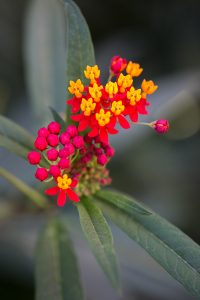 The outer edges of the garden are filled with flowering plants, shrubs, vines and container gardens.
The outer edges of the garden are filled with flowering plants, shrubs, vines and container gardens.
Garden art is also very obvious. “Everything is an art project!” Victoria laughs, naming gourds as one of her obsessions. She paints them, embellishes them with mosaics and makes bowls out of them. Mosaic stepping stones are also her handiwork.
Finds are also used to decorate the garden. One of her favorite destinations for such purposes is Lancaster Creative Reuse (lancastercreativeresuse.org). “You never know what you’ll find there,” she says of the donation-based store that inspires creativity in its visitors.
 Victoria maintains that her garden demonstrates what can be accomplished in a small space and on a shoe-string budget. She is of the opinion that Lancaster’s efficiency is a reflection of how much the Plain community “affects us in ways we don’t even realize, and that extends to gardening,” she says of practices like sharing what we grow, saving seeds and being thrifty and creative from a decorative standpoint. “It’s in our DNA,” she states. “And, it’s part of what makes Lancaster unique.”
Victoria maintains that her garden demonstrates what can be accomplished in a small space and on a shoe-string budget. She is of the opinion that Lancaster’s efficiency is a reflection of how much the Plain community “affects us in ways we don’t even realize, and that extends to gardening,” she says of practices like sharing what we grow, saving seeds and being thrifty and creative from a decorative standpoint. “It’s in our DNA,” she states. “And, it’s part of what makes Lancaster unique.”
She also enjoys seeing the different kinds of gardens that exist in “the Garden Spot of America.” In her estimation, Lancaster is a “special energy center where differences collide, yet peacefully co-exist. Because of that, Lancaster maintains its integrity.”
Victoria, who is a breast-cancer survivor, also views gardens as healing places. She points to the old days when a person who seemed down or depressed received the advice of “you need to go out to the garden.”
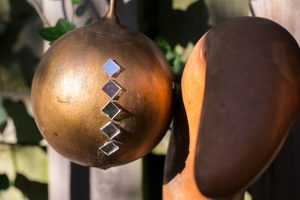 “Here, we have this need to have plants for peace of mind,” she continues. “People have always seemed to know that without being told that. Flowers make us happy. If I’m stressed, I like to go out to the garden and pull a few weeds, move things around or just sit.”
“Here, we have this need to have plants for peace of mind,” she continues. “People have always seemed to know that without being told that. Flowers make us happy. If I’m stressed, I like to go out to the garden and pull a few weeds, move things around or just sit.”
“It’s delightful to be sitting in my garden and hear people walking by,” she continues. “They speculate about what’s behind the fence. Or, if the gate is open, they ask if they can take a look. A lot of times, their demeanor completely changes – you can see them relax and enjoy their visit with nature.”

